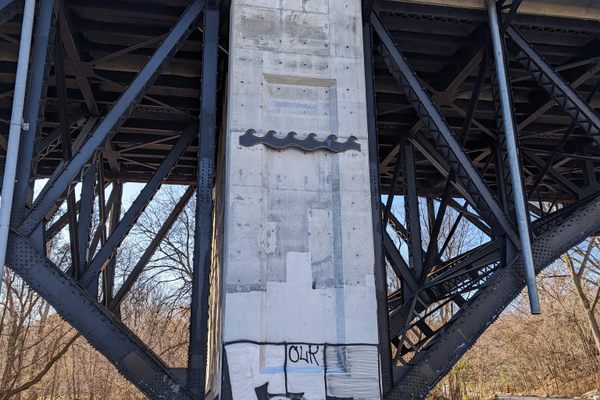About
A raging storm in November 1898 permanently altered the course of two rivers on the South Shore of Massachusetts, filling their original inlet with a lovely stretch of sand that is today's Rexhame public beach in the coastal town of Marshfield.
The storm, known as the Portland Gale, created the beach and carved a new mouth for the North River three miles up the coast, while extending the length of the South River by three miles. It also made history as one of the region's worst maritime disasters, claiming more than 400 lives and wrecking more than 150 ships, at sea and in harbors, in less than 24 hours.
The storm is named for the side wheel paddle steamship Portland, which vanished in the freak nor'easter. One of many New England night boats that competed with the railroads at the time, the majestic white and gold shallow-draft vessel was lavishly furnished with chandeliers, red velvet carpet, and fine china. It was known for its passenger accommodations: 167 cherry-paneled staterooms and 514 white pine berths. The ship sailed off into the night from Boston's India Wharf on schedule at seven p.m. November 26, due in Portland, Maine, the next day. Snowflakes started to fly shortly after departure. The wind began to howl and the seas grew treacherous as a full-scale blizzard erupted. The Portland never arrived at its namesake city.
Late the next day, bodies and life jackets from the Portland began washing up on the shores of Cape Cod. It was soon clear that no one had survived. (There's no exact count of the number of people lost; the only passenger list went down with the ship. Since then, ships have left passenger manifests ashore.)
Among those lost were 19 crew members, many born in Canada, who belonged to Portland's Abyssinian church, a Black congregation whose 1828 meeting house on Newbury Street is currently undergoing restoration. The loss contributed to the church's closing in 1917, a significant blow to Portland's Black community.
The location of the Portland was not officially documented until 2002. The ship rests upright on a mud bottom, its hull nearly intact from keel to main deck, under more than 400 feet of water southeast of Cape Ann, Massachusetts. After the disaster, propeller-driven ships started replacing paddlewheelers on the route.
As for the "new" beach, its ocean-facing side today is a local favorite of swimmers and sunbathers. At the other side of the public parking lot, trails meander through sand dunes filled with cedar trees, beach plums, heathers, and dune grass, leading to a popular point of access for launching canoes, kayaks, and paddleboards on the South River. The tall dunes and delicate vegetation help protect this special landscape, one of the most unique on the South Shore.
Related Tags
Know Before You Go
Lifeguards, restrooms and snack bar. Non-resident parking fee. (The town increased parking fees recently due traffic congestion at popular times.)
Published
August 2, 2021































